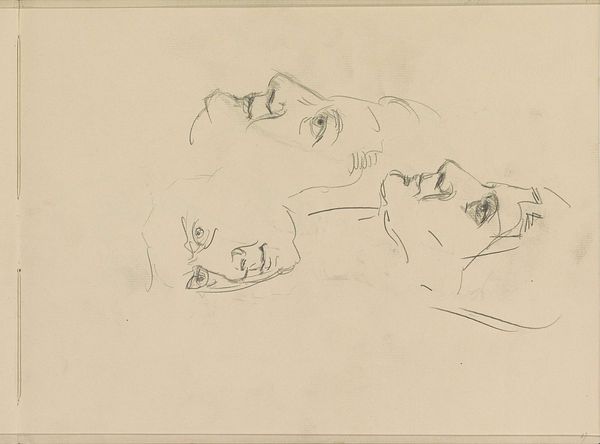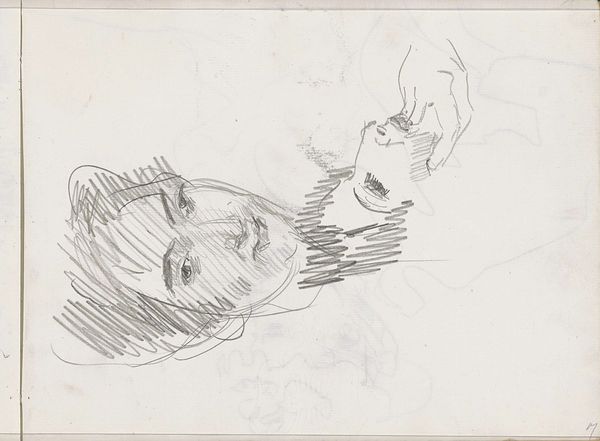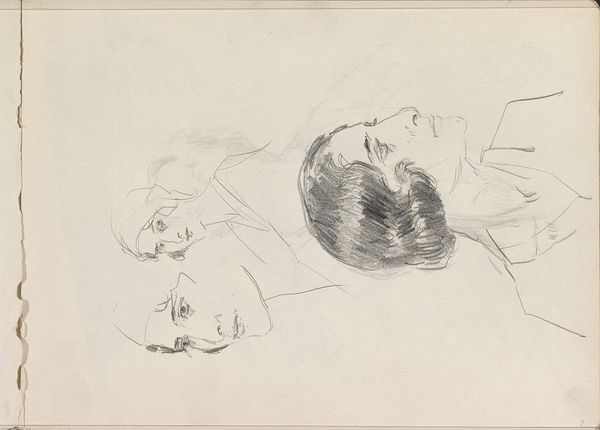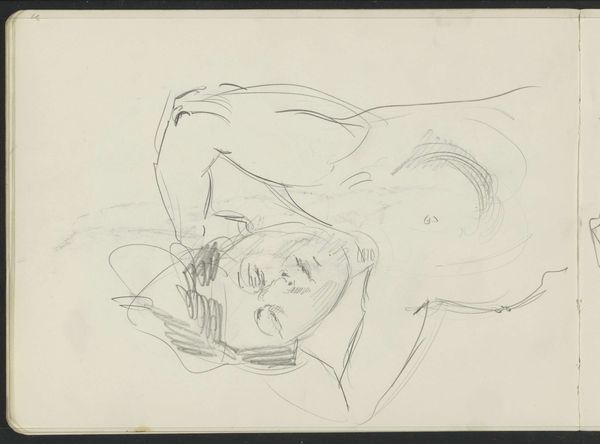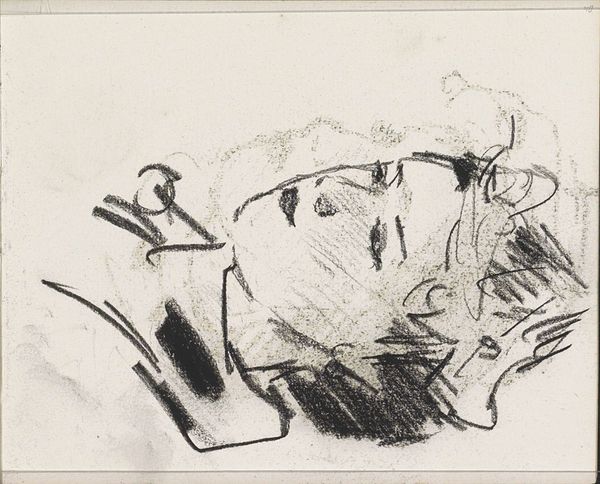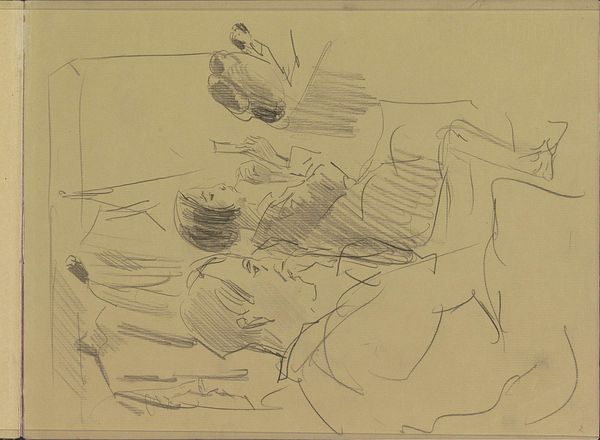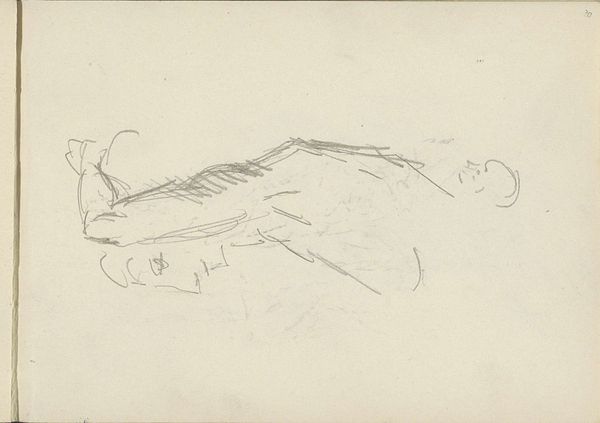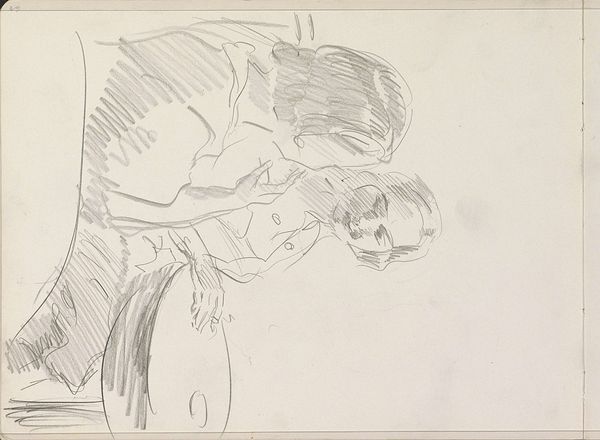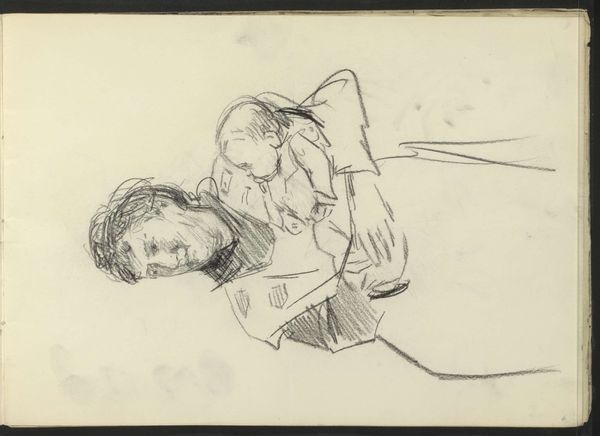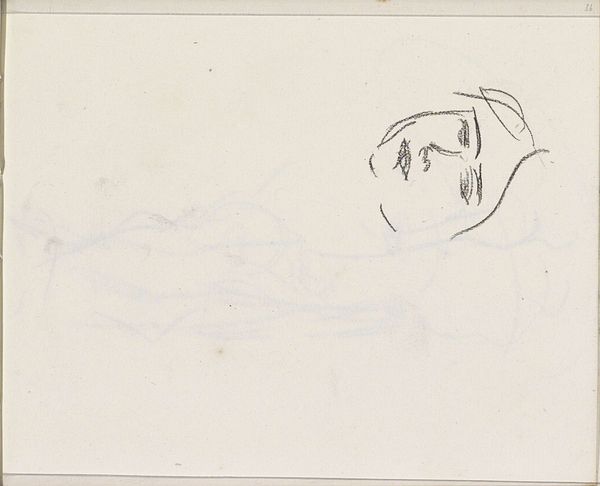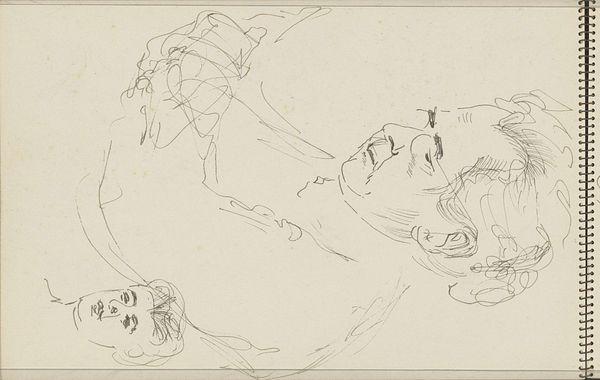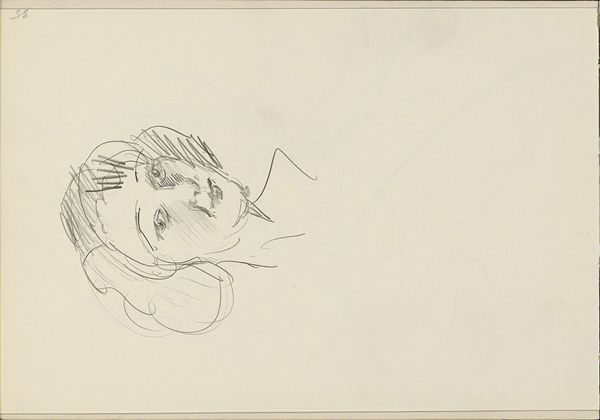
Copyright: Rijks Museum: Open Domain
Curator: Looking at this drawing, titled "Studieblad met gezichten," or "Study Sheet with Faces," created by Isaac Israels sometime between 1875 and 1934, what strikes you first? Editor: It feels very intimate, almost like peeking into someone's private sketchbook. The immediacy of the pencil strokes and the unfinished nature of the sketches convey a sense of spontaneity. Curator: Exactly! The Rijksmuseum holds this intriguing work, a pencil study showcasing Israels' experimentation with capturing the human face. It is a personal work and may be considered distinct from the artwork that was officially commisioned or put on display at galleries. I think it helps give insight into the artist's approach, not just to his artistic practice but as an active person constantly analyzing his environment. Editor: Absolutely, it's a window into the artist’s process. You can almost feel Israels working through different angles and expressions. I'm especially interested in the texture of the paper and the way the light pencil work creates subtle gradations. You get a real sense of the material. Is this typical of Israels’ sketching materials? Curator: From a historical context, the accessibility and relative inexpensiveness of paper and pencil certainly made sketching an ideal way for artists like Israels to develop ideas, although at the time pencils were emerging as popular tools of modern design which came along with its own artistic and social statements. This drawing also offers us a glimpse into the culture of artistic training during this period. Sketching was crucial in honing observation skills and developing the ability to quickly capture a subject. Editor: Thinking about production, this gives us some insight into his working methods, right? The multiple faces, the repetitions. They hint at a restless energy. I also wonder, were these studies intended to lead to something more substantial, or were they valued as artworks in their own right? Curator: Well, these were formative moments of skill acquisition, so that might shed light onto the distinction between "art" and labor" back then. Such drawings played an important part in both education and professional work for artists in the late 19th and early 20th centuries. Editor: This piece has certainly given me a renewed appreciation for the role of sketching in the larger narrative of art history. Curator: Indeed. It reminds us that even seemingly unfinished or preparatory works can offer invaluable insight into the artistic process and its cultural contexts.
Comments
No comments
Be the first to comment and join the conversation on the ultimate creative platform.
